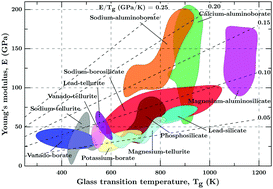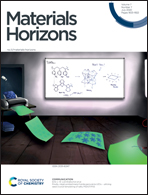Deep learning aided rational design of oxide glasses†
Abstract
Designing new glasses requires a priori knowledge of how the composition of a glass dictates its properties such as stiffness, density, or processability. Thus, accelerated design of glasses for targeted applications remain impeded due to the lack of composition–property models. To this extent, exploiting a large dataset of glasses comprising of up to 37 oxide components and more than 100 000 glass compositions, we develop high-fidelity deep neural networks for the prediction of eight properties that enable the design of glasses, namely, density, Young's modulus, shear modulus, hardness, glass transition temperature, thermal expansion coefficient, liquidus temperature, and refractive index. We demonstrate that the models developed here exhibit excellent predictability, ensuring its ability to capture the underlying nonlinear composition–property relationships. Using these models, we develop a series of new design charts, termed as glass selection charts. These charts enable the rational design of functional glasses for targeted applications by identifying unique compositions that satisfy two or more constraints, on both compositions and properties, simultaneously.

- This article is part of the themed collection: Materials Horizons 10th anniversary regional spotlight collection: Asia-Pacific


 Please wait while we load your content...
Please wait while we load your content...